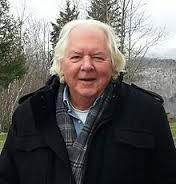Why You Want To Keep A Journal by Robert Moss
 When a lusty, ambitious young Scot named James Boswell first met Dr. Samuel Johnson, Johnson advised him to keep a journal of his life. Boswell responded that he was already journaling, recording “all sorts of little incidents.” Dr Johnson said, “Sir, there is nothing too little for so little a creature as man.”
When a lusty, ambitious young Scot named James Boswell first met Dr. Samuel Johnson, Johnson advised him to keep a journal of his life. Boswell responded that he was already journaling, recording “all sorts of little incidents.” Dr Johnson said, “Sir, there is nothing too little for so little a creature as man.”
Indeed, there is nothing too little, or too great, for inclusion in a journal. If you are not already keeping one, I entreat you to start today. Write whatever is passing through your mind, or whatever catches your eye in the passing scene around you. If you remember your dreams, start with them. If you don’t recall your dreams, start with whatever thoughts and feelings are first with you as you enter the day, or that interval between two sleeps the French used to call dorveille (“sleep-wake”), a liminal space when creative ideas often stream through. If you have any hopes of becoming a writer, you’ll find that journaling is your daily workout that keeps your writing muscles limber. If you are already a writer, you may find that as you set things down just as they come, with no concern for editors, critics or consequences, you are releasing descriptive scenes, narrative solutions, characters – even entire first drafts – quite effortlessly.
Some of the most productive writers have also been prodigious journal-keepers. Graham Greene started recording dreams when he was sixteen, after a breakdown in school. His journals from the last quarter-century of his life survive, in the all-but-unbreakable code of his difficult handwriting. First and last, he recorded his dreams, and – as I describe in detail in my Secret History of Dreaming, they gave him plot solutions, character development, insights into the nature of reality that he attributed to some of his characters, and sometimes bridge scenes that could be troweled directly into a narrative. Best of all, journaling kept him going, enabling him to crank out his daily pages for publication no matter how many gins or how much cloak-and-dagger or illicit amour he had indulged in the night before.
You don’t have to be a writer to be a journaler, but journal-keeping will make you a writer anyway. In the pages of your journal, you will meet yourself, in all your aspects. As you keep a journal over the years, you’ll notice the rhymes and loops or cycles in your life. Mircea Eliade, the great Romanian-born historian of religions, was a great journaler. In the last volume of his published journals, he reflects, during a visit to Amsterdam in 1974, on how a bitter setback to his hopes at the time he first visited that city nearly a quarter-century before had driven him to do his most enduring work. He had been hoping that his early autobiographical novel, published in English as Bengal Nights, would be a big commercial success, enabling him to live as a full-time novelist. Sales were disappointing. Had it been otherwise, “I would have devoted almost all my time to literature and relegated the history of religions to second place, even though Shamanism was at the time almost entirely drafted.” The world would have gained a promising, and perhaps eventually first-class, novelist; but we might have lost the scholar who first made the study of shamanism academically respectable and proceeded to breathe vibrant life, as well as immense erudition, into the cross-cultural study of the human interaction with the sacred.
Synesius of Cyrene, a heterodox bishop in North Africa around 400, counseled in a wonderful essay On Dreams that we should keep twin journals: a journal of the night and a journal of the day. In the night journal, we would record dreams as the products of a “personal oracle” and a direct line to the God we can talk to. In the day journal, we would track the signs and correspondences through which the world around us is constantly speaking in a symbolic code. “All things are signs appearing through all things. They are brothers in a single living creature, the cosmos.” The sage is one who “understands the relationship of the parts of the universe” – and we deepen and focus that understanding by recording signs in our day journal.
Partly because I keep unusual hours, and am often embarked on my best creative work long before dawn, I don’t separate my night journal from my day journal. All the material goes into one book – a leather-bound travel journal, when I am on the road. I try to type up my entries before my handwriting (as difficult as Greene’s) becomes illegible and put the printouts in big ringback binders. I save each entry with a date and a title in my data files, so I automatically have a running index. One of the things you’ll come to see clearly, as you journal dreams over a considerable period of time, is that your dream self travels ahead of your waking self, scouting the ways.
(c) Robert Moss, All rights reserved.
Youtube- Present! – Dreaming with Robert Moss (part one)
Youtube- Present! – Dreaming with Robert Moss (part two)
Merlian News Podcasts with Robert Moss About Coincidences & Synchronicities
